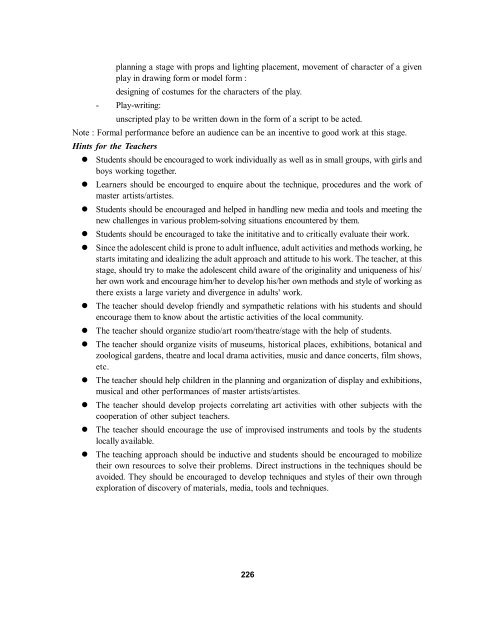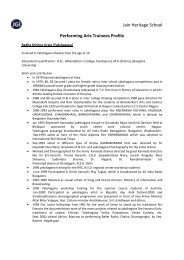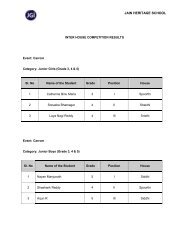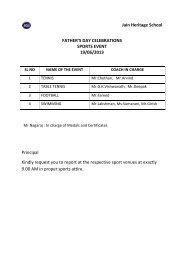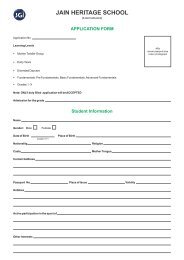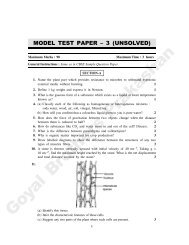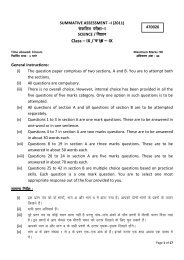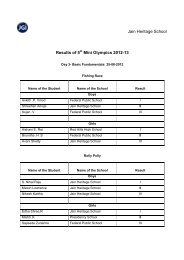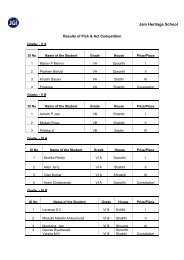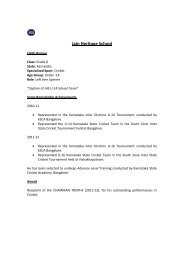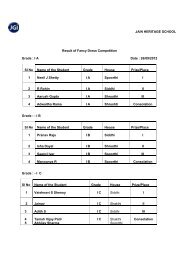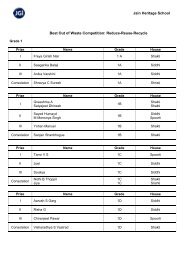Secondary School Curriculum 2012 - Central Board of Secondary ...
Secondary School Curriculum 2012 - Central Board of Secondary ...
Secondary School Curriculum 2012 - Central Board of Secondary ...
Create successful ePaper yourself
Turn your PDF publications into a flip-book with our unique Google optimized e-Paper software.
planning a stage with props and lighting placement, movement <strong>of</strong> character <strong>of</strong> a given<br />
play in drawing form or model form :<br />
designing <strong>of</strong> costumes for the characters <strong>of</strong> the play.<br />
- Play-writing:<br />
unscripted play to be written down in the form <strong>of</strong> a script to be acted.<br />
Note : Formal performance before an audience can be an incentive to good work at this stage.<br />
Hints for the Teachers<br />
• Students should be encouraged to work individually as well as in small groups, with girls and<br />
boys working together.<br />
• Learners should be encourged to enquire about the technique, procedures and the work <strong>of</strong><br />
master artists/artistes.<br />
• Students should be encouraged and helped in handling new media and tools and meeting the<br />
new challenges in various problem-solving situations encountered by them.<br />
• Students should be encouraged to take the inititative and to critically evaluate their work.<br />
• Since the adolescent child is prone to adult influence, adult activities and methods working, he<br />
starts imitating and idealizing the adult approach and attitude to his work. The teacher, at this<br />
stage, should try to make the adolescent child aware <strong>of</strong> the originality and uniqueness <strong>of</strong> his/<br />
her own work and encourage him/her to develop his/her own methods and style <strong>of</strong> working as<br />
there exists a large variety and divergence in adults' work.<br />
• The teacher should develop friendly and sympathetic relations with his students and should<br />
encourage them to know about the artistic activities <strong>of</strong> the local community.<br />
• The teacher should organize studio/art room/theatre/stage with the help <strong>of</strong> students.<br />
• The teacher should organize visits <strong>of</strong> museums, historical places, exhibitions, botanical and<br />
zoological gardens, theatre and local drama activities, music and dance concerts, film shows,<br />
etc.<br />
• The teacher should help children in the planning and organization <strong>of</strong> display and exhibitions,<br />
musical and other performances <strong>of</strong> master artists/artistes.<br />
• The teacher should develop projects correlating art activities with other subjects with the<br />
cooperation <strong>of</strong> other subject teachers.<br />
• The teacher should encourage the use <strong>of</strong> improvised instruments and tools by the students<br />
locally available.<br />
• The teaching approach should be inductive and students should be encouraged to mobilize<br />
their own resources to solve their problems. Direct instructions in the techniques should be<br />
avoided. They should be encouraged to develop techniques and styles <strong>of</strong> their own through<br />
exploration <strong>of</strong> discovery <strong>of</strong> materials, media, tools and techniques.<br />
226


